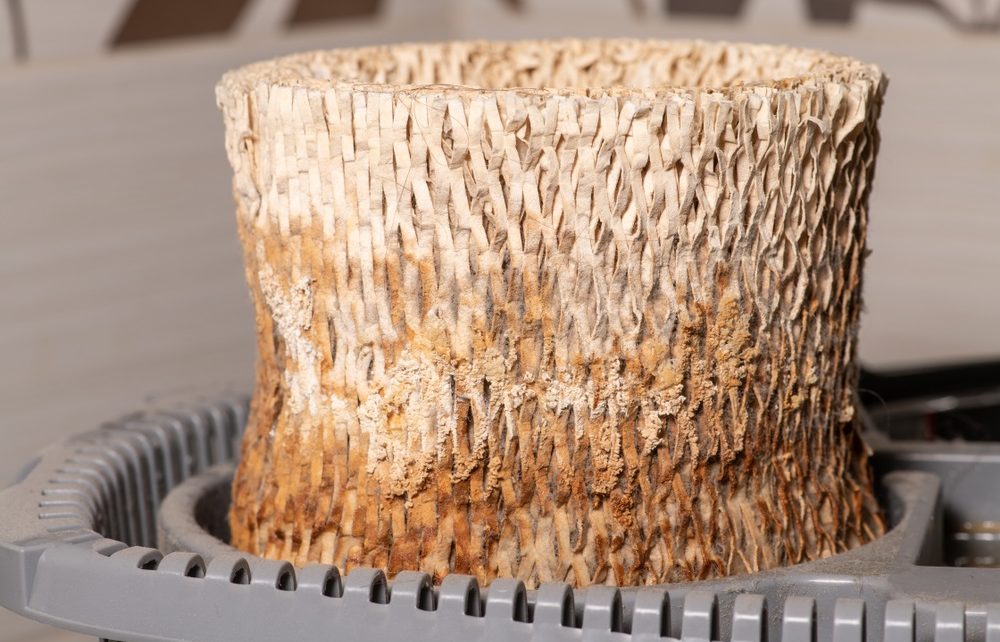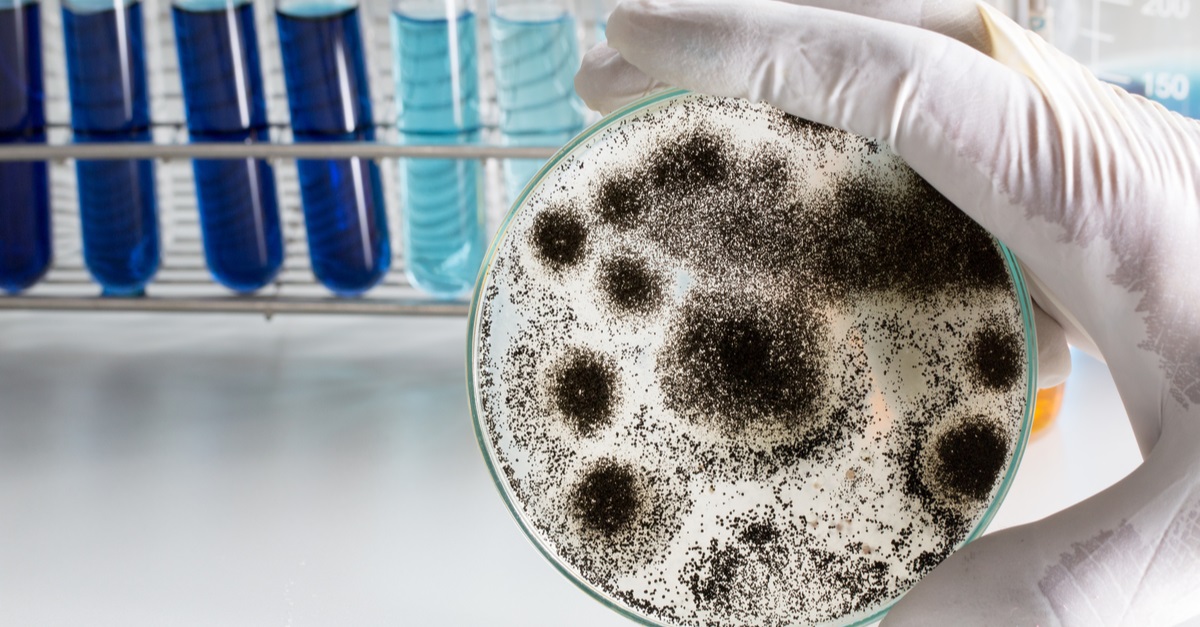
Humidifiers can make a world of difference for people that suffer from allergies, dry skin, or respiratory conditions. Humidifiers add moisture into the air to improve humidity levels to reduce the effects of pollen and dust. People that reside in dry locations can benefit the most from this appliance.
But if you’ve been noticing brown stuff inside your humidifier tank, you may be wondering what is the brown stuff in my humidifier and where it came from. If you notice brown spots in the humidifier tank, it is likely a build-up of mineral deposits or mold.
While mineral deposits are not super harmful to your health, they will impact the humidifier’s performance. And, frankly, they aren’t pleasant to look at.
Having mold or mildew build-up in your humidifier, on the other hand, is harmful to your health and should be remedied as soon as possible.
Keep reading to understand where this brown stuff comes from and how to get rid of it so your humidifier can get back to keeping your home comfortable and humid.
What Are Mineral Deposits?
Mineral deposits are build-ups of calcium found in nearly all water. Calcium, and other minerals, accumulate when water evaporates and leaves them behind. Over time the deposits will turn a brownish color, the brown substance you see in the humidifier.
The residue shows up in the appliance’s tank, water tray, filter basket, or other components. So if you notice the deposits in the tank, there is a chance it is also inside other parts of the unit.
How to Remedy Mineral Deposits
The presence of an acid is usually the best method for getting rid of calcium build-up. Acids like bleach can work if used in modest quantities, but white vinegar and hydrogen peroxide are safer choices. All three of these acids can rid your humidifier of mineral deposits.
Take whatever humidifier parts have calcium and rinse them out in warm water. Next, clean them gently with a solution made with one of the acids mentioned. This means about a gallon of water mixed with one of the following: a teaspoon of bleach, a cup of vinegar, or a tablespoon of hydrogen peroxide.
Using a microfiber cloth or the soft side of a sponge, wipe away the brown gunk completely. Use the acid solution to do this, and make sure you remove all signs of dirt or calcium. And when you don’t see any more of the brown residue, you should be good to go.
What is Mold?
Mold is a type of fungi that thrives in wet, damp places with little or no sunlight. They grow out in the form of multicellular structures called hyphae. They release mold spores that search for more places to grow in, as mentioned, these places must have moisture and avoid sunlight.
Mold is harmful for two reasons: the first is that mold eats away at the material it grows on. So if you have mold growing in your humidifier water tank, the plastic is likely eroding slowly. So slowly, you may not even notice the disintegration.
The second and more serious reason mold is bad, is that when humans inhale mold spores, they can irritate our body and lead to illnesses. You may notice a pink slime on your shower floor, this is pink mold and the most common mold found in residential properties. Luckily, pink mold is probably the least dangerous of all the molds, but you still shouldn’t live among it.

How to Remedy Mold
Mold can be taken care of similarly to mineral deposits. But rather than just removing the film on the water tank, you need to disinfect the tank and kill all bacteria. If you leave bacteria behind after cleaning, the mold will likely spring up again within a day or two.
Health Concerns
Luckily, mineral deposits pose almost no risk to your health. So those are just a nuisance in your humidifier. But mold, on the other hand, is dangerous in your home. Mold and mildew can lead to conditions or worsen preexisting conditions. People with asthma, chronic bronchitis, or other respiratory conditions, may find it hard to breathe if exposed to mold.
Inhaling mold spores can even lead to insomnia, confusion, and other mental problems because of the toxicity of mold. And those with mild conditions like allergies or sensitivities may feel the effects of the mold in the air resulting in scratchy, dry eyes and throat.
If you believe you are experiencing any of these symptoms, you should see a doctor and determine if there is mold in your home.
How to Prevent Brown Stuff in Your Humidifier
The only way to prevent scum and slime from manifesting on your humidifier is to clean it regularly.
The water in your humidifier tank needs to be changed out for clean water at least once every day. The water tank itself needs cleaning at least once a week, or else mold may have a chance to develop.
If you want to take extra steps to keep your humidifier mold, mildew, and calcium-free, there are some substances you can add to the humidifier water. The solutions you use to clean the tank, like vinegar, can be added to the tank water to stop bacteria from collecting.
Bottom Line
So don’t let another day pass with brown stuff on your humidifier. It could be harming the health of your household! Maintaining your humidifier is easy if you keep up with a set schedule, so pick a day to clean your humidifier, and you’ll never have to see the brown stuff ever again.
It is important to address any irregularities you notice in your water tank, so don’t let issues like these get worse before you take care of it.
FAQs
How long does it take for mold to develop?
Mold only takes 24 to 48 hours to grow in the right environment. This is why it is vital to you and your family’s health that you rid your humidifier of mold and ensure that you prevent any more from growing. Regular humidifier maintenance is the solution to mold growth.
How long does it take for mineral deposits to accumulate?
This depends largely on what kind of water you are putting in the humidifier tank. If it is not filtered or distilled, there is probably more calcium and minerals in the water that remains behind when the water evaporates. Mineral deposits can develop anywhere between 6 hours and a full week of use.
